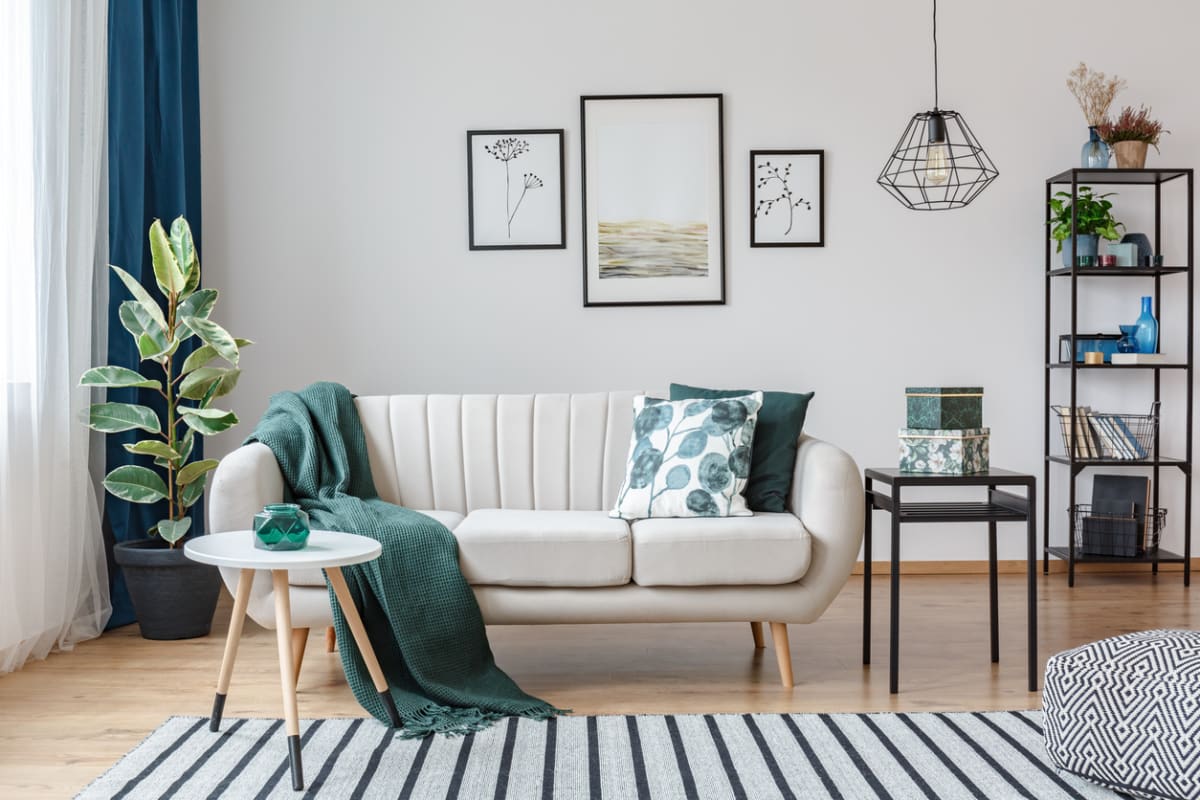5 Items To Remove from Your Furnished Rental Before Tenants Move In

Planning to rent a furnished apartment? Awesome! Furnishing a property does mean spending more upfront. However, it also offers the potential to increase your passive income, as furnished properties have higher rents than unfurnished units.
These units are ideal for young professionals and people willing to pay more for a furnished rental. This said, many students who have not yet accumulated their own furnishings may prefer furnished apartments, too.
But what should a furnished rental not include? What items should you remove from a furnished property, both for your and your tenants’ sakes, before they move in? We answer these and more questions in this blog post.
Furnished vs. Unfurnished Rentals
Let’s clarify the definitions of “furnished” and “unfurnished” properties.
A furnished rental, sometimes called a turnkey property, comes with all essentials and amenities a tenant needs to live comfortably. Here are items that a furnished rental should have in each room of the apartment or house.
- Bedroom: A furnished bedroom should have a bed with a mattress, pillows, and bedding. A dresser or a closet should be included, too, as well as nightstands and, ideally, lamps. A fully furnished bedroom should also have other essentials and accessories. This may include blankets, alarm clocks, some artwork, and a desk with a chair if there’s enough space.
- Living Room: In a furnished rental, a living room should have a sofa or a couch. Additionally, it may offer a coffee table, and some inexpensive wall art. If you’re going all in, consider adding a TV, bookshelves, plants, and lamps.
- Kitchen: A furnished kitchen should have all the essential appliances, such as a refrigerator, a stove, and a microwave. It’s also a good idea to provide dishes, utensils, cookware, and towels. If you want to fully stock your kitchen, consider investing in a coffee maker, cutting boards, glassware, and mugs.
- Dining Room: A furnished dining room should, at a minimum, have a table with chairs. A better-furnished kitchen may also include artwork on the walls and a cabinet for dishware.
- Bathroom: Aside from a bathtub or shower, toilet, and sink, a fully furnished bathroom often also includes toiletries like toilet paper, as well as towels and a hair dryer. Other accessories include a plunger, trash bin, and bath mats.
Finally, a furnished rental should also have some cleaning tools and supplies. These can include a vacuum cleaner, a mop and a bucket, as well as some all-purpose cleaners.
What about unfurnished properties? While they don’t come with furnishings, these units still need to include essential items such as fixtures and appliances. Usually, they often come with window coverings as well.
What to Remove from a Furnished Rental
Now that we’ve covered what a furnished rental should include, let’s talk about the items that you may want to remove from a unit before you rent it to new tenants.
- Personal Belongings: Before you rent your unit, make sure you remove any personal or sentimental belongings that either belong to you or previous tenants. The reason for this is twofold. First, you don’t want your new tenants to accidentally damage things of sentimental value to you. Second, your tenants should feel at home in their new place. This means having enough space for their personal belongings.
- Valuable Artwork: If you have some expensive artwork on the walls, we recommend removing it before new tenants move in. For example, if you bought an original painting from Singulart or any other prestigious art gallery; do you really want to risk it getting damaged or stolen? To err on the safe side, take your valuable artwork with you.
- Expensive or Delicate Items: Anything expensive or delicate that could easily be damaged or stolen should be removed before tenants move in. That gorgeous crystal vase? It could very easily be damaged or broken. The expensive white sofa? Unless you want to spend hours getting stains out of it once tenants leave, we suggest removing it from the unit and getting something more practical with a fabric that doesn’t stain easily.
- Damaged Furniture and Appliances: Additionally, you also don’t want to leave damaged furniture and appliances for your new tenants. Remove any worn-out furniture and non-functional appliances and replace or repair them as needed. Likewise, if one room or part of a rental has become too old or significantly damaged, consider renovating it.
- Non-Essential or Bulky Items: A furnished place does not equal a cluttered space. To provide your tenants with a comfortable, functional rental, remove any non-essential or overly bulky items. This may include broken gym equipment, unnecessarily large storage units, etc.
Conclusion
When it comes to renting out a furnished rental, be sure you’ve stocked up on the essential items tenants expect. However, ensure that you’ve removed any items that may be of value, damaged, or are personal belongings.
